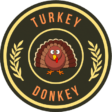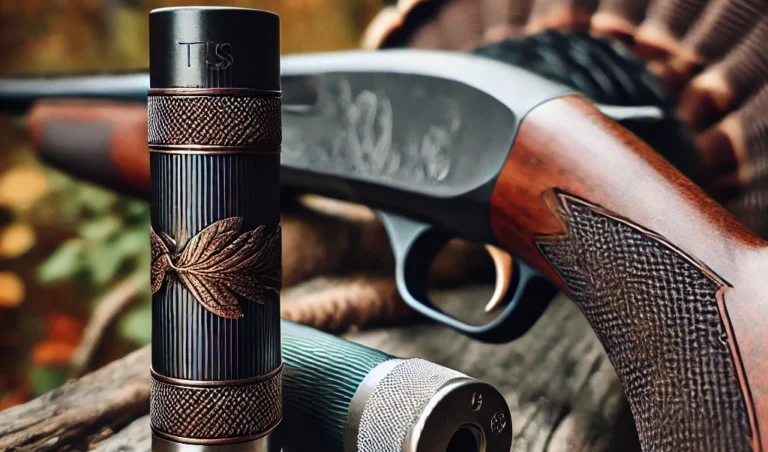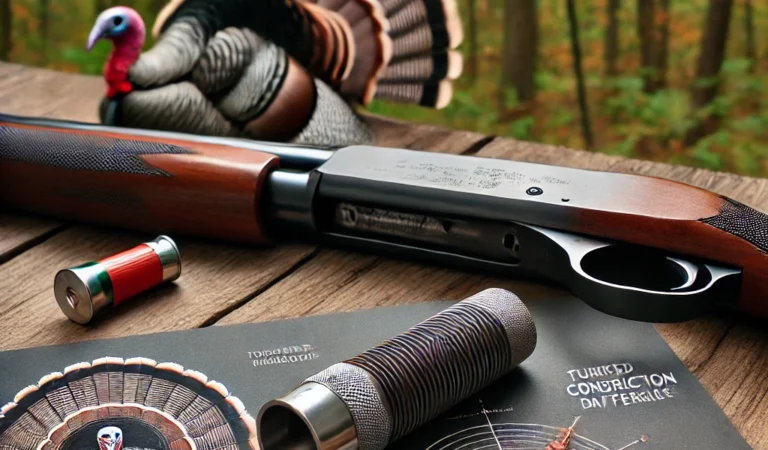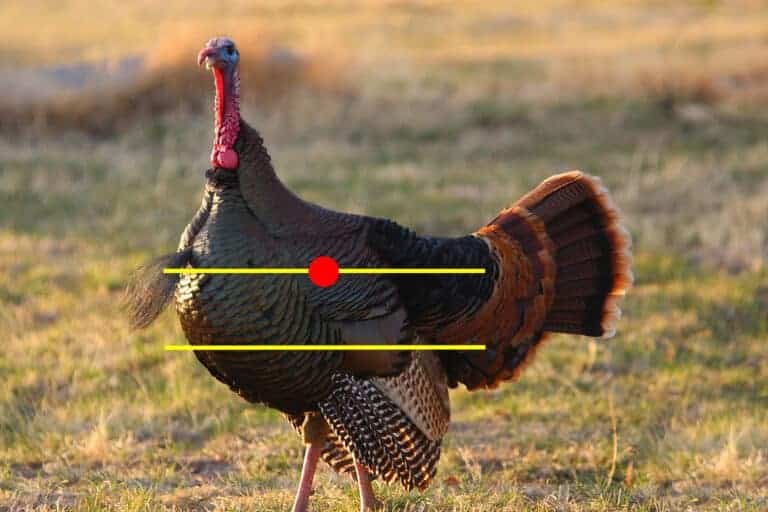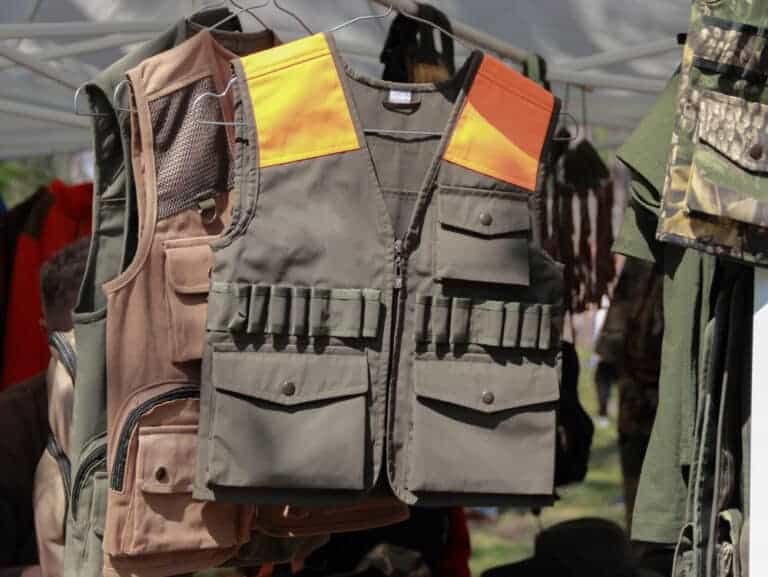Fall Turkey Hunting – An Amazing Hunting Experience 2024
Fall turkey hunting is a cherished outdoor activity that has gained immense popularity among avid hunters and wildlife enthusiasts. As the leaves change their colors and the air becomes crisp, the pursuit of turkeys in autumn offers a unique experience filled with excitement and challenge.
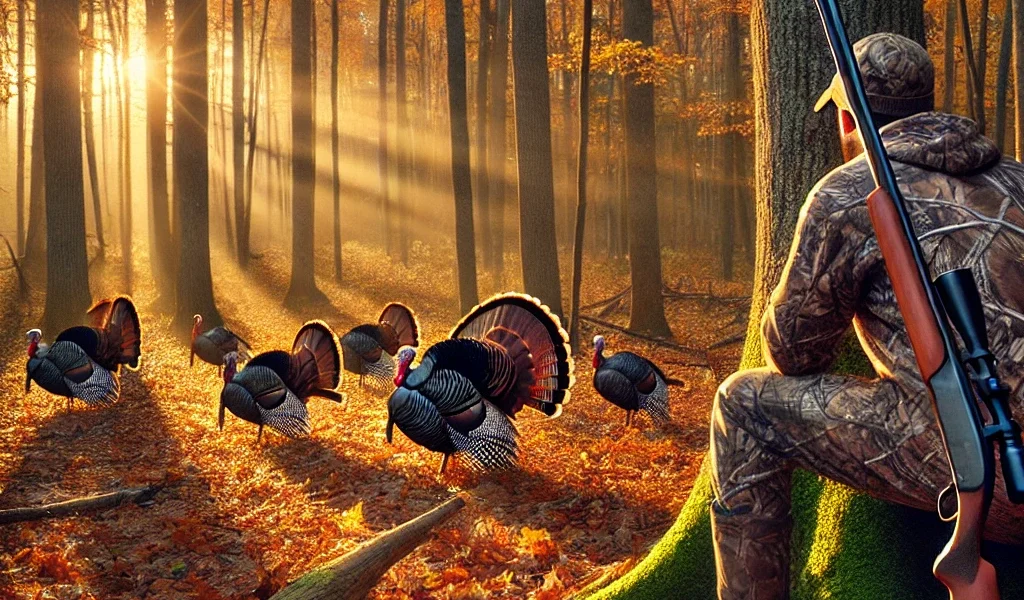
Unlike spring turkey hunting, which focuses primarily on pursuing gobblers during their mating season, fall turkey hunting presents different circumstances that necessitate a thorough understanding of turkey behavior and habits during this time of year.
Fall Turkeys
Fall turkey hunting is an ancient tradition deeply rooted in North American culture. It allows hunters to test their skills against one of the most elusive game species – the wild turkey.
These magnificent birds possess acute senses, making them a challenging target for even the most experienced hunters.
The thrill lies in outsmarting these intelligent creatures by employing various strategies, calls, and decoys to lure them within range for a clean shot.
While spring turkey hunting is often associated with harvesting mature gobblers, fall turkey hunts offer an opportunity to pursue gobblers and hens as they travel in flocks called “rafters.”
This added dynamic makes fall hunting more unpredictable and requires hunters to adapt their tactics accordingly.
Turkey Behavior in the Fall
To have a successful fall turkey hunt, it is crucial to comprehend how turkeys behave during this particular season. Understanding their behavior allows hunters to anticipate movements and locate roosting sites, feeding areas, and travel routes, which is essential for planning effective strategies.
Compared to other times of the year, autumn is a time when turkeys exhibit distinctive patterns. Food sources change as crops ripen or become scarce, mating activity decreases significantly, flock dynamics shift as young poults age, and social hierarchies within rafter groups become more defined.
Hunters may struggle to locate turkeys without understanding these behavioral changes or fail to attract them with appropriate calling techniques. Therefore, acquiring knowledge about fall turkey behavior becomes a prerequisite for a successful and rewarding hunting experience.
Hunting Fall Turkeys
Turkey behavior in the fall compared to spring
During the fall season, turkeys exhibit distinctive behavioral patterns that differ from their behavior in spring. This shift can be attributed to several factors. Firstly, the availability and abundance of food sources change drastically in autumn.
Turkeys must adapt to consuming different vegetation types, acorns, berries, and grains as they prepare for the harsh winter months ahead. Mating dynamics also play a role in altering turkey behavior during this time of year.
Unlike spring, when gobblers actively court hens and engage in elaborate displays, fall mating is less prominent and generally occurs outside the breeding season. Territoriality may decrease as turkeys prioritize finding food over establishing territories during the fall months.
How changes in food sources and mating patterns affect behavior
The shift in food sources significantly impacts turkey behavior during the fall season. As summer turns into autumn, turkeys rely heavily on available mast crops such as acorns that provide vital nutrition for survival. This change affects their movement patterns as they search for nutritious morsels through forests.
Additionally, changes in mating patterns influence turkey behavior since no active breeding occurs during this time. Gobblers focus less on attracting hens and more on finding suitable feeding grounds to replenish their energy reserves before winter sets in.
Insight into flock dynamics and hierarchy within Turkey groups
Flock dynamics are essential in understanding turkey behavior during the fall season. Turkeys are naturally inclined towards forming flocks comprising multiple hens, poults (young turkeys), and mature gobblers who establish a social hierarchy within their groups.
Typically led by dominant gobblers known as “boss birds”
The social hierarchy ensures a structured order within the flock, with younger males occupying lower ranks while the dominant gobblers assume leadership roles. Understanding this dynamic provides valuable insights into turkey behavior during fall hunting seasons, helping hunters identify patterns and strategize their approach accordingly.
Preparing for Fall Turkey Hunting
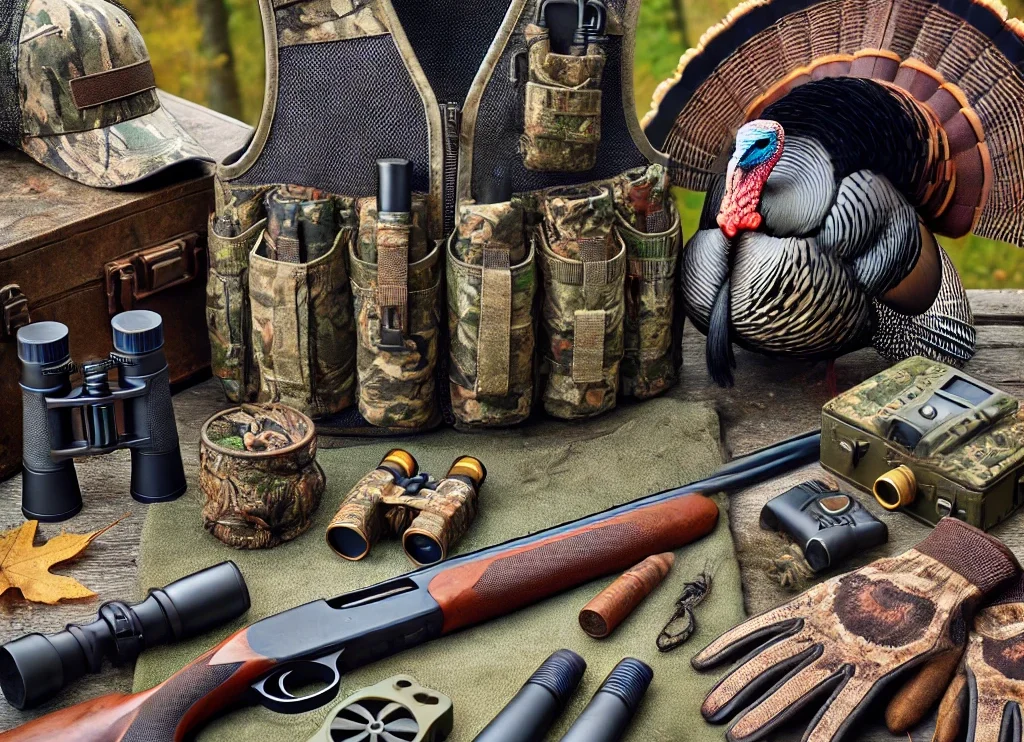
Equipping Yourself for Success
Embarking on a fall turkey hunt requires carefully selecting equipment that will enhance your chances of success. First and foremost, invest in high-quality camouflage clothing that matches the colors and patterns in your hunting environment.
This will help you blend seamlessly into the natural surroundings and remain undetected by wary turkeys. Additionally, having an assortment of calls is crucial in attracting turkeys during the fall season.
To mimic different turkey sounds effectively, you’ll want to master vocalizations such as yelps, clucks, purrs, and kee-kees. Furthermore, consider utilizing decoys to create a realistic visual representation that can lure turkeys within shooting range.
Decoys come in different types, including jake and hen decoys, each serving a specific purpose depending on your hunting scenario. Choose appropriate firearms or bows based on your comfort level and local regulations.
Scouting: The Key to Success
Scouting is an essential aspect of fall turkey hunting, as it helps identify key areas where turkeys frequent during their daily routines.
Start by studying topographic maps or using online resources to locate potential hunting locations with suitable habitat characteristics, such as mixed forests or agricultural fields where turkeys are likely to feed.
Once you’ve identified prospective areas, visit them beforehand to scout for roosting sites – typically tall trees near reliable food sources – and feeding areas like open clearings or crop fields where these birds congregate during daylight hours.
Pay close attention to travel routes connecting these locations; turkeys follow established paths between roosts and feeding areas with minimal obstacles or disturbances.
Licensing: Ensuring Compliance and Conservation
Before embarking on a fall turkey hunt, you must possess the appropriate licenses and permits required by your state or province. Regulations vary, so familiarize yourself with local hunting laws to avoid legal complications.
Acquiring the necessary permits demonstrates your commitment to ethical hunting practices and contributes to conservation efforts.
State wildlife agencies rely on hunting license fees and permit revenue to fund important initiatives such as habitat restoration, research programs, and population management strategies.
So be sure to obtain the appropriate documentation before hitting the field—it’s a responsible step that supports the long-term viability of turkey populations and their habitats.
With these preparations in place, you can enter the fall turkey hunting season well-equipped, knowledgeable about turkey behavior and habitats, legally compliant, and ready for success in pursuing these magnificent birds.
Using decoys effectively to lure turkeys within shooting range
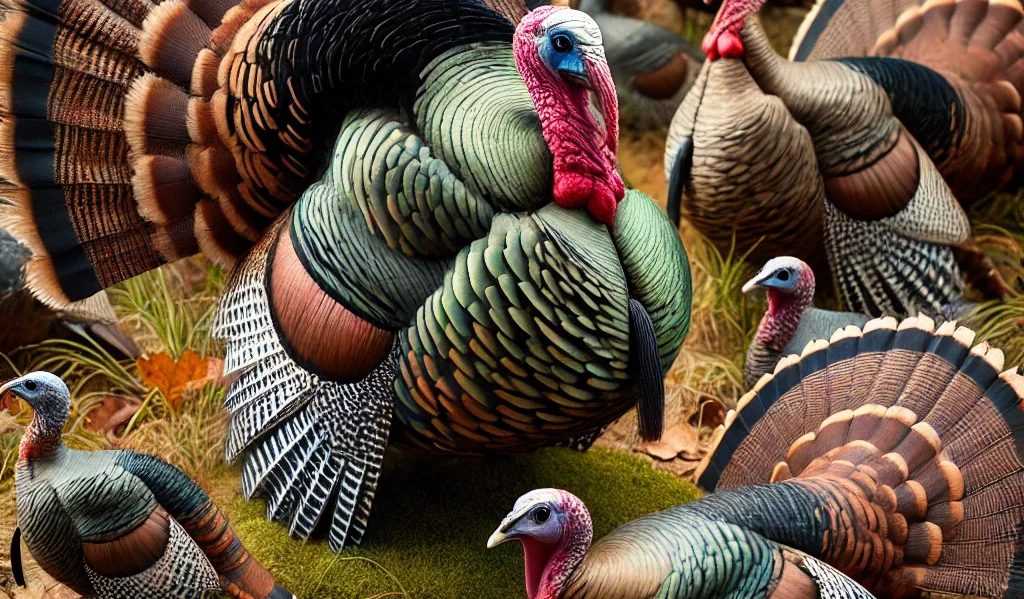
Decoys play a significant role in enticing turkeys closer to an ethical shot opportunity. There are two main types: Jake decoys represent younger males, and hen decoys represent mature females.
Understanding their purposes is crucial for utilizing them effectively in different scenarios. Jake decoys can provoke dominant gobblers’ territorial instincts by challenging or attracting attention.
On the other hand, Hen decoys can create a sense of safety and comfort for turkeys approaching cautiously. Proper placement is key; position decoys in open areas with clear lines of sight to make them visible from a distance.
Placement strategies for maximum effectiveness
Strategic decoy placement enhances the effectiveness of your fall turkey-hunting endeavors. Set up your decoys within shooting range but ensure they are positioned in a way that allows you to maintain a clear line of sight. Placing decoys near natural features like trees or brush can add realism and make them appear more natural to passing turkeys.
Consider the wind direction, as turkeys rely heavily on their keen sense of smell. Position yourself downwind from the decoys, allowing approaching birds to catch your scent before detecting your presence.
Fall Turkey Hunting Tips
Mastering the art of calling is crucial in fall turkey hunting. Turkeys communicate through various vocalizations, each serving a unique purpose. To lure them within range, hunters must become adept at mimicking these sounds.
Yelp is your go-to call, and it can be used throughout the day to locate birds or get their attention. Clucks are soft, short calls that mimic contentment, often used when turkeys are near but not yet visible.
Purring sounds replicate relaxation and can be utilized after attracting a flock’s interest. Kee-kees imitate juvenile turkeys and can prove effective in drawing in curious adults.
Understanding when to use aggressive or subtle calls based on specific hunting situations is essential for successful fall turkey hunting. Aggressive calling works best during early mornings when turkeys are more vocal and actively communicate with one another. Loud yelps can rouse gobblers from their roosts, sparking curiosity or territorial responses.
Subtle calls are preferable as mid-morning progresses into the later hours of the day. Soft clucks and purrs mimic natural turkey behavior after settling into feeding routines or feeling secure in their surroundings.
Safety Considerations during Fall Turkey Hunting
It is important to wear blaze orange clothing while moving through the woods to ensure visibility among other hunters.
Safety should always be paramount when participating in fall turkey hunting. It is crucial to wear blaze orange clothing while navigating through the woods as it ensures high visibility among fellow hunters in dense areas. The bright color is an effective signal, reducing the risk of accidental injuries caused by mistaken identity or miscommunication.
Tips for setting up a safe hunting zone with proper shooting lanes.
Creating a safe hunting zone involves careful consideration and planning. Identify suitable shooting lanes in advance that provide clear lines of sight but also minimize potential risks, such as obstructions or buildings beyond the target area. Ensure you have 360-degree awareness of your surroundings, and never shoot unless you are certain about what lies beyond your target.
Reminders about firearm safety rules and ethical hunting practices.
Adhering to firearm safety rules is essential during fall turkey hunting – treat every firearm as if it is loaded, never point it at anything you do not intend to shoot, and keep your finger off the trigger until ready to fire.
Additionally, ethical hunting involves respecting wildlife by only taking responsible shots within a reasonable range and ensuring clean kills. Properly dispose of any waste or remains while leaving minimal environmental impact.
Conclusion

As fall arrives, so does the opportunity for exhilarating turkey hunting experiences. Mastering calling techniques and understanding when to employ aggressive or subtle calls adds depth and precision to your approach.
Effectively using decoys and strategically placing them can turn a mere encounter into an advantageous, close-range opportunity. However, safety should always remain paramount amidst the thrill of the hunt.
By donning blaze orange clothing for visibility and following firearm safety rules and ethical hunting practices, hunters can ensure a fulfilling experience that upholds their well-being and respect for nature’s abundant offerings. So step into the woods with confidence this fall season, knowing that an unforgettable turkey hunting adventure awaits with proper techniques, strategies, and safety measures in place!
